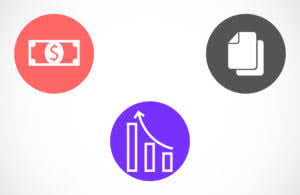What is a Contra Account? Types & Examples Explained
Double Entry Accounting Definition & Examples
May 14, 2020Chapter 10 Flexible Budget and Overhead Analysis Determining how budgeted amounts should be
August 7, 2020
This estimation can be based on various methods, such as the percentage of sales method or the aging of accounts receivable method. Contra asset accounts are specific types of accounts in accounting ledgers that hold a credit balance and are used to reduce the value of related asset accounts. By nature, typical asset accounts possess a debit balance; however, contra asset accounts typically have a credit balance. They are linked with specific asset accounts and reduce their balance, thereby reflecting the net value of the assets. The allowance is adjusted periodically to reflect changes in the business environment and the actual collection experience.
How does it affect the balance sheet?
Key points include understanding the importance of accurate estimates, the methods for calculating doubtful accounts, and the impact on financial statements. Economic conditions can significantly impact a company’s receivables, making it crucial to adjust estimates for doubtful accounts based on current economic trends. The bad QuickBooks debt expense reduces net income on the income statement, reflecting the cost of anticipated uncollectible receivables. A well-managed allowance for doubtful accounts can signal to investors and creditors that the company has robust risk management practices in place.
The Most Popular Accounting & Finance Topics:

The accuracy and reliability of financial records depend on auditing the allowance for doubtful accounts. This process includes maintaining compliance and transparency by reviewing estimates, validating assumptions, and addressing discrepancies. Adherence to accounting standards is essential for ensuring transparency and accuracy in financial reporting. Bad debt expense represents the cost a company incurs when it determines that a specific receivable is uncollectible. This identification can be based on various factors, such as the age of the receivable, the financial condition of the debtor, or historical collection patterns.
![]()
Improve cash flow management with allowance for doubtful accounts
- By recognizing potential losses from uncollectible receivables, businesses can prevent overstated revenue and uphold transparency.
- By predicting the amount of accounts receivables customers won’t pay, you can anticipate your losses from bad debts.
- Bad debt is the expense account, which will show in the operating expense of the income statement.
- Paystand is on a mission to create a more open financial system, starting with B2B payments.
- If the present balance is $0, the journal entry will be a debit of $10,000 to Bad Debts Expense and a credit of $10,000 to Allowance for Doubtful Accounts.
It ensures that a company’s financial statements reflect a more accurate picture of its financial health by accounting for receivables that are unlikely to be collected. This method helps in matching expenses with revenues within the same accounting period, adhering to the matching principle in accounting. The allowance for doubtful accounts is a contra-asset account that reduces the total accounts receivable reported on the balance sheet.
To illustrate the use of contra accounts, consider a business accounting for bad debt expenses when customers fail to fulfill payment obligations. The Allowance for Doubtful Accounts, a contra asset account, estimates uncollectible receivables. When managing the allowance for doubtful accounts, it is crucial to regularly review and adjust the estimates to reflect current economic conditions and customer payment behaviors. This ensures that the financial statements accurately represent the potential risk of bad debts. Regular reviews help maintain the integrity of financial reporting and provide a clearer picture of a company’s financial health.

It represents the amount of sales that are expected to be returned or refunded to customers. Accounts receivable aging reports provide valuable insights into the status of outstanding invoices. By categorising receivables based on their due dates, these reports help identify potential risks and prioritise collection efforts. Regular reviews of aging reports enable businesses to address overdue accounts promptly, reducing the contra asset account likelihood of bad debts and improving cash flow. Transparency in financial reporting builds trust with stakeholders and helps businesses meet regulatory requirements. Accurate disclosure of allowance for doubtful accounts, including the assumptions and methods used, demonstrates a commitment to ethical accounting practices.
- A well-managed allowance for doubtful accounts can signal to investors and creditors that the company has robust risk management practices in place.
- It represents the total amount of depreciation that has been charged to the asset since it was acquired.
- This involves comparing actual write-offs to previous estimates and making adjustments as necessary.
- For example, a rising proportion of bad debts may signal the need for stricter credit assessments or improved payment collection processes.
- The risk of bad debts can be mitigated by regular monitoring of accounts receivable and timely follow-up on overdue payments.
- Consistency allows for more reliable comparisons over time and enhances the credibility of financial data.
What is the Percentage of Receivables Method?
By doing so, companies can better match their revenues with the corresponding expenses, providing a clearer picture of financial performance. Businesses in industries with significant seasonal variations, such as retail or tourism, may notice spikes in uncollectible receivables during certain periods. Analyzing these seasonal trends allows companies to anticipate and prepare for potential cash flow challenges, ensuring they maintain sufficient liquidity during peak times of bad debt occurrences. Additionally, comparing trends across different economic cycles can help businesses understand how external factors, such as recessions or booms, affect their receivables. Allowance Bookkeeping for Etsy Sellers for doubtful is the contra asset account with accounts receivable which present in the balance sheet.